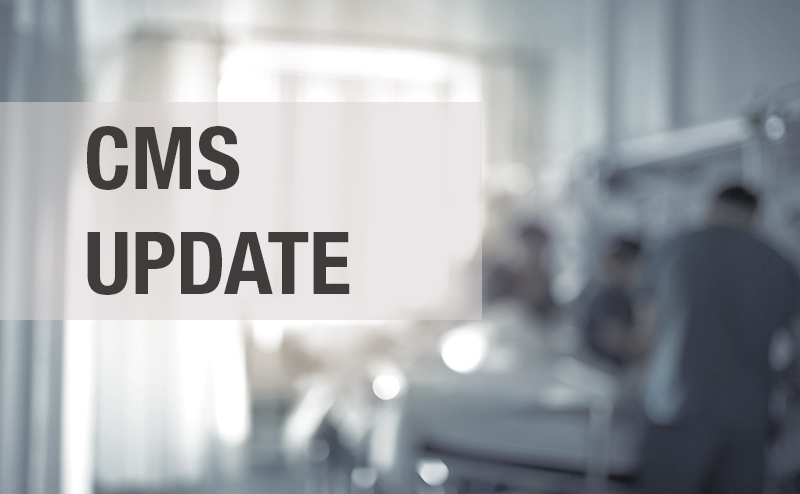On March 30, the Centers for Medicare & Medicaid Services (CMS) announced a plethora of policies and waivers aimed at providing regulatory flexibility to health care practitioners during this crisis. Numerous policies are big wins for emergency medicine -- and flexibilities that ACEP advocated hard for. You can also find this in a PDF if needed.
Update: ACEP and CMS hosted a webinar on April 3 so ACEP members could ask questions about these changes. Here's the video, and keep reading for more details about each change.
EMTALA: CMS has issued guidance for hospitals and critical access hospitals (CAHs) on their EMTALA obligations during this public health emergency. This includes allowing medical screening exams to be delivered via telehealth. CMS has also issued a limited blanket waiver of EMTALA sanctions, allowing for patients to be redirected to another location offsite to receive a medical screening exam, as long as the redirection is consistent with a state emergency preparedness or pandemic plan. Here's an EMTALA FAQ from CMS.
- Please see ACEP’s EMTALA fact sheet for more details.
Telehealth: CMS added the ED E/M codes (CPT codes 99281 to 99285), the critical care codes (CPT codes 99291 and 99292), and the observation codes (CPT codes 99217-99220, 99224-99226, and 99234-99226) to the list of approved Medicare telehealth services for the duration of the COVID-19 national emergency. CMS had previously expanded the ability to perform telehealth services but had not allowed emergency physicians to use the ED E/M codes—which most accurately reflect the intensity and value of emergency services. ACEP had identified this issue as a top regulatory priority, and through ACEP’s advocacy, CMS has now recognized that ED E/Mcodes are indeed the most appropriate codes to use when delivering emergency telehealth services.
When delivering emergency telehealth services, emergency physicians should use the code that most accurately reflects that service being performed and use the same place of service code that they would have used if that service was delivered in-person. They should also attach modifier 95 to the claim.
- For example, regardless of location, emergency physicians who are delivering emergency services can use the ED E/M codes with place of service 23 (ED) and attach modifier 95.
Telehealth services must have both an audio and visual component. The use of facetime or skype on a mobile device is permissible. CMS will also reimburse for audio-only telephone calls. However, these are not considered telehealth services and have separate codes: (CPT codes 98966-98968 and CPT codes 99441-99443.)
- For more information on telehealth, please see ACEP’s telehealth fact sheet.

Physician Supervision Requirements: CMS is modifying the direct supervision requirements for physicians overseeing services delivered by non-physician practitioners, and teaching physicians overseeing services performed by residents. For the duration of the COVID-19 emergency, the overseeing physician does not need to be in the same physical location as non-physician practitioner or resident providing the service, but instead can provide the “direct supervision” remotely via telehealth.
Expanding the Healthcare Workforce: CMS is allowing hospitals to increase their workforce capacity by removing barriers for physicians, nurses, and other clinicians to be readily hired from the local community as well as those licensed from other states without violating Medicare rules. For more information on licensing, please see ACEP’s fact sheet.
CMS is issuing waivers so that hospitals can use other practitioners, such as physician assistants and nurse practitioners, to the fullest extent possible, in accordance with a state’s emergency preparedness or pandemic plan. These clinicians can perform services such as order tests and medications that may have previously required a physician’s order where this is permitted under state law.
CMS Hospital Without Walls: CMS is allowing hospitals to provide services in locations beyond their existing walls to expand care capacity and to develop sites dedicated to COVID-19 treatment. Under CMS’s temporary new rules, hospitals will be able to transfer patients to outside facilities, such as ambulatory surgery centers, inpatient rehabilitation hospitals, hotels, and dormitories, while still receiving hospital payments under Medicare. Ambulances will also be able to transport patients to a wider range of locations when other transportation is not medically appropriate. These destinations include community mental health centers, federally qualified health centers (FQHCs), physician’s offices, urgent care facilities, or ambulatory surgery centers.
Waiver of Physician Self-Referral Law: CMS issued blanket waivers of sanctions under the physician self-referral law. This includes allowing hospitals to provide benefits and support to their medical staffs, such as multiple daily meals, laundry service for personal clothing, or child-care services while the physicians and other staff are at the hospital and engaging in activities that benefit the hospital and its patients.
Merit-based Incentive Payment System (MIPS): CMS had already provided some relief to clinicians participating in MIPS. In this rule, CMS is allowing clinicians who have been adversely affected by the COVID-19 public health emergency to submit an application and request reweighting of the MIPS performance categories for the calendar year (CY) 2019 performance year. Additionally, CMS is adding one new Improvement Activity for the CY 2020 performance year: clinicians will receive credit for participating in a clinical trial utilizing a drug or biological product to treat a patient with COVID-19 and then reporting their findings to a clinical data repository or clinical data registry.
Related: View the CMS-approved 1135 waivers, state by state.





